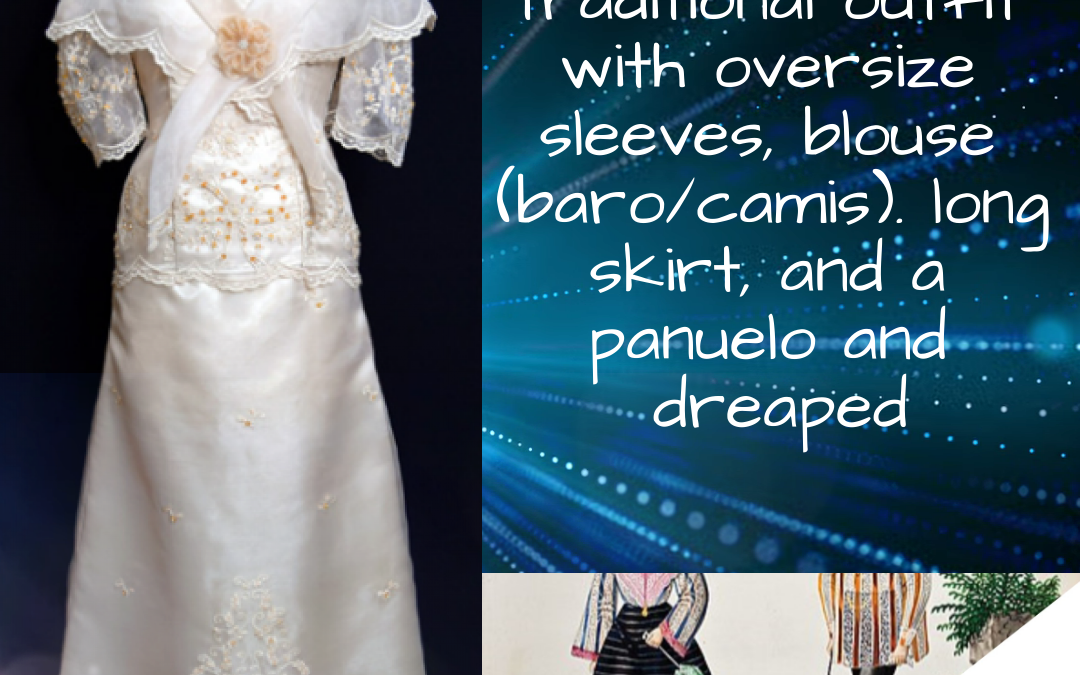The Spanish colonial period’s influence sparked a fascination among Filipinos with terno. A design such as the baro was greatly influenced by the costume worn by statues of the Blessed Virgin.
Women had to wear the pañuelo as a veil or to cover their breasts due to the fine materials used for the baro. When the Spaniards took over, their goal was to propagate Christianity. Back then, showing certain parts of the body like one’s ankle, foot, back, or leg was a great taboo.
The spread of the Filipiniana costume happened gradually before the 17th century ended. The Spaniards’ clothing regulations resulted in the adoption of starched pina and more delicate sinamay and jusi (silk).
Alterations were made to the coveted terno during the 17th century. In this time, Filipino-Spanish mestizas (Filipinos with some Chinese ancestry who descended from the Spanish colonial period) wore dresses that were comparable to those worn by European women. This consists of a short skirt, blouse, a hat with the addition of an apron or tapis, and a pañuelo. This style, however, did not become popular and was only short-lived.
Women in the early 18th century predominantly wore the pañuelo and saya.. The sarong or tapis worn over the new saya symbolizes native pride. The camisa’s sleeves were made longer and narrower and were gathered and pleated where they joined the body.
The new pañuelo was very small and almost functioned like a loose collar. According to several historians, this was a “native touch” since it differs from the grand and intricate neck ruffles worn by European aristocrats.
There has been a significant change from the previous generation to the present. Some examples of modern Filipino evolutions are tapis, barot saya, the balintawak, Maria Clara, and the current Modern Filipiniana.
You may observe all the distinct and modern designs of Filipiniana, especially during the Independence celebration. Various designs, hues, and styles to fit your taste and fashion.
So pick your designs with confidence.

